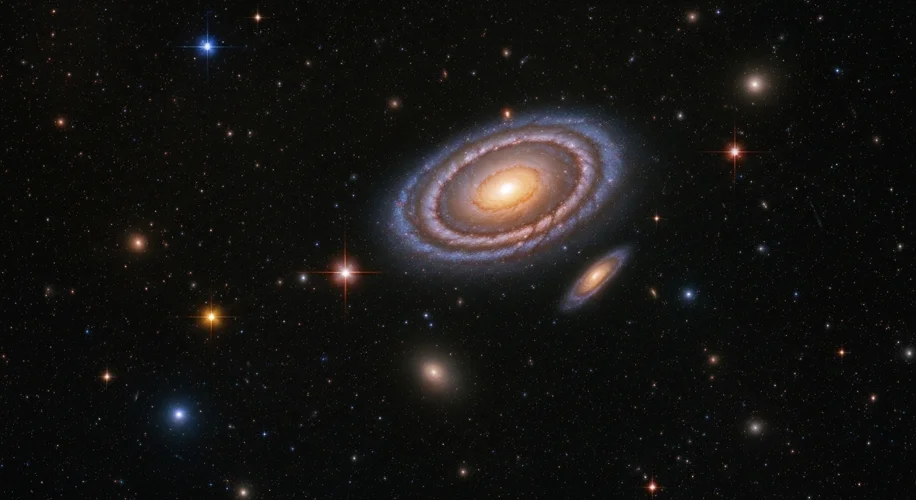Imagine standing on a mountaintop, the inky blackness of night unfurling above, studded with an impossible number of stars. Now, zoom out. Far, far out. So far, in fact, that our sun becomes an infinitesimal speck, our familiar galaxy, the Milky Way, a mere swirl in a cosmic ocean.
This is the humbling perspective offered by looking at a deep-field image of a galaxy cluster, a collection of hundreds, even thousands, of galaxies bound together by gravity, stretching across unimaginable distances. These celestial behemoths are not just collections of stars; they are entire universes unto themselves, each star a sun potentially harboring its own planets, its own stories.

One such vista, a tapestry woven from light from epochs long past, reveals a dramatic truth about our own existence. It’s a truth that, when truly contemplated, can feel both terrifying and profoundly liberating: our cosmic insignificance.
For much of human history, our understanding of the universe was Earth-centric. The heavens revolved around us, a divine stage for human drama. The invention of the telescope, however, began to chip away at this comfortable illusion. Galileo Galilei, peering through his rudimentary instrument in the early 17th century, saw mountains on the moon and moons orbiting Jupiter, hints that our world was not so unique.
Then came the grander surveys, the telescopes that could penetrate deeper, revealing a universe far vaster and more populated than ever imagined. The concept of galaxies beyond our own Milky Way, once heresy, became established fact. Each point of light, once thought to be a star within our galaxy, was revealed to be an entire galaxy, containing billions of stars.
Galaxy clusters, like the one captured in stunning detail by the James Webb Space Telescope or the Hubble Space Telescope, represent the largest known gravitationally bound structures in the universe. They are cosmic cities, teeming with stellar populations. Consider this: our Milky Way galaxy contains an estimated 100 to 400 billion stars. A typical galaxy cluster can contain hundreds or even thousands of galaxies. The Coma Cluster, for instance, is estimated to contain over 1,000 galaxies.
When we gaze at these images, we are not just looking at pretty pictures. We are looking back in time. The light from these distant galaxies has traveled for billions of years to reach us. Some of the galaxies captured in deep-field images might have formed and evolved, or even ceased to exist, since the light we are observing began its journey.
This vastness of scale and time serves as a stark reminder of our relative insignificance. On a cosmic timeline, human civilization is but a fleeting flicker. Our planet, a pale blue dot in the grand scheme of things, is one of countless worlds. The dramas that unfold on Earth – our triumphs, our conflicts, our very existence – are imperceptible from this cosmic vantage point.
It’s a thought that can be disquieting. For those who find solace in anthropocentrism, this cosmic perspective can feel like a diminishment. Our carefully constructed narratives of human exceptionalism seem to crumble when faced with the sheer, indifferent scale of the universe.
Yet, there’s a profound beauty and a unique kind of freedom in this realization. If we are not the center of the universe, then perhaps we are free to define our own meaning, to find purpose in our brief, remarkable existence. The fact that we, on this small planet, can comprehend this immense reality, can build instruments to peer into the depths of space and ponder our place within it, is perhaps the most extraordinary thing of all.
The quest to understand the cosmos is as old as humanity itself. From early astronomers charting the movements of stars to modern scientists utilizing cutting-edge telescopes, we have always looked to the heavens for answers. These deep-field images, of which galaxy clusters are a magnificent example, are not just scientific data; they are invitations to contemplation. They challenge our preconceptions and offer a humbling, yet ultimately inspiring, perspective on who we are and where we fit into the grand, unfolding story of the universe. They are echoes of the past, whispering truths about our present and our future, reminding us that even in our seeming insignificance, we are part of something unimaginably vast and wondrous.

